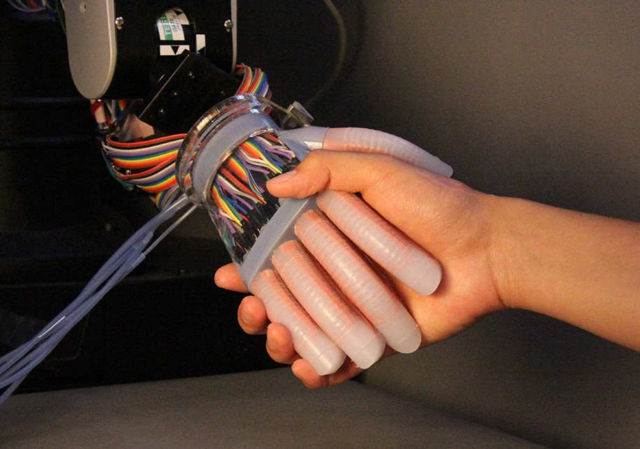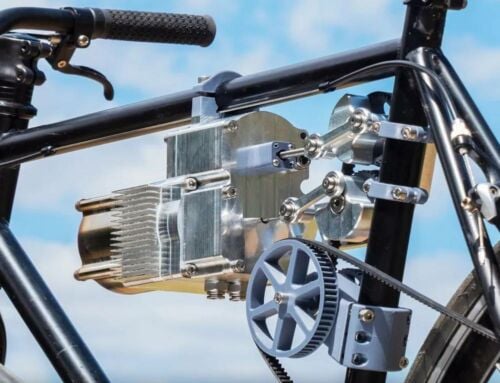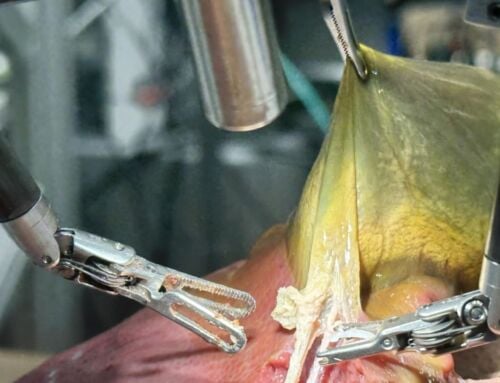Scientists found a way for a soft robot to feel its surroundings internally, in much the same way humans do.
Researchers from Cornell University created a new way to give robots a sense of touch, allowing them to handle delicate items.
The group has devised a way for a soft robot to feel its surroundings internally, in much the same way humans do.
Above, doctoral student Shuo Li shakes hands with an optoelectronically innervated prosthesis. Credit Huichan Zhao/Provided
A team led by Robert Shepherd, assistant professor of mechanical and aerospace engineering and principal investigator of Organic Robotics Lab, has published a paper describing how stretchable optical waveguides act as curvature, elongation and force sensors in a soft robotic hand.
Doctoral student Huichan Zhao is lead author of “Optoelectronically Innervated Soft Prosthetic Hand via Stretchable Optical Waveguides,” which is featured in the debut edition of Science Robotics. The paper published Dec. 6; also contributing were doctoral students Kevin O’Brien and Shuo Li, both of Shepherd’s lab.
“Most robots today have sensors on the outside of the body that detect things from the surface,” Zhao said. “Our sensors are integrated within the body, so they can actually detect forces being transmitted through the thickness of the robot, a lot like we and all organisms do when we feel pain, for example.”
via futurism
source Cornell University






Leave A Comment